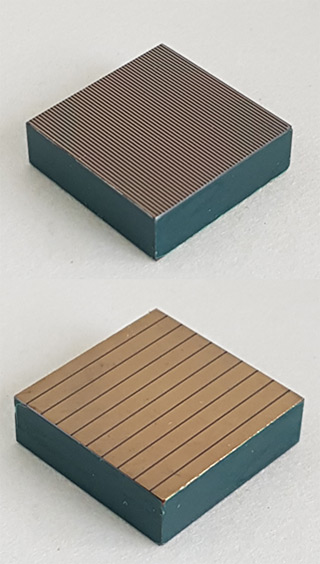The project has the final goal of realizing a complete hard-X/soft-𝛾 rays detection system in the energy range 10‐1000 keV based on CZT spectroscopic detectors with sub-millimeter spatial resolution in three dimensions and a digital electronics acquisition chain. This represents an important upgrade in respect to current space instrumentations and it will be essential in the next decades to solve several still open hot scientific issues regarding the observation of cosmic ray sources (e.g., pulsars, black holes, binary systems).
- high detection efficiency (>80% at 500 keV)
- fine spectroscopy (1% FWHM at 511 keV)
- high spatial resolution (<0.5 mm)
- fine timing resolution (<1 μs)
- scattering polarimetry capability

This drift strips configuration allows to obtain a high sensor segmentation (∼3000 voxels) with few readout channels (25). In fact, the position of the interaction of the cosmic ray with the detector can be calculated by reading the signals induced on all the electrodes.
Furthermore, the analysis of the signals allows to extract also the depth of interaction, thus realizing an actual 3D detector. The capability of reading the signal from the anodes, cathodes and drifting electrodes combined with digital pulse processing guarantees a large flexibility to different operative conditions and to further improve the spectroscopic performance of the device.
In summary, the prototype could be the basic element for the realization of high performance detectors in spectroscopy, imaging, timing and polarimetry both as focal planes on space telescopes implementing new high energy optics (e.g. Broadband Laue lens), and for small wide field instruments to be used in the future on clusters of micro satellites.










